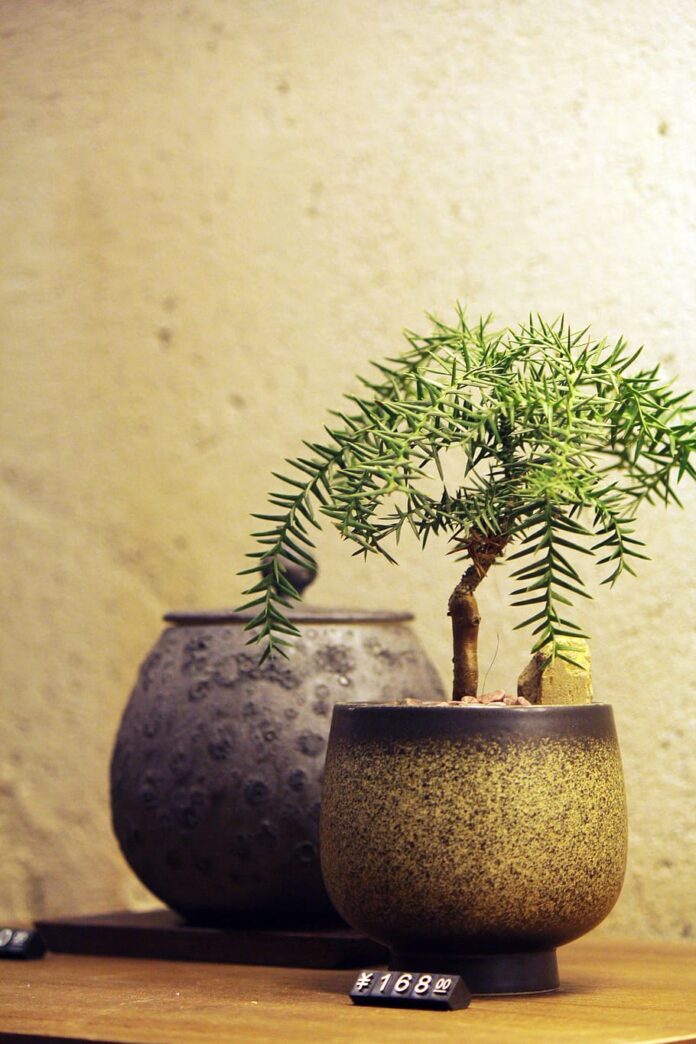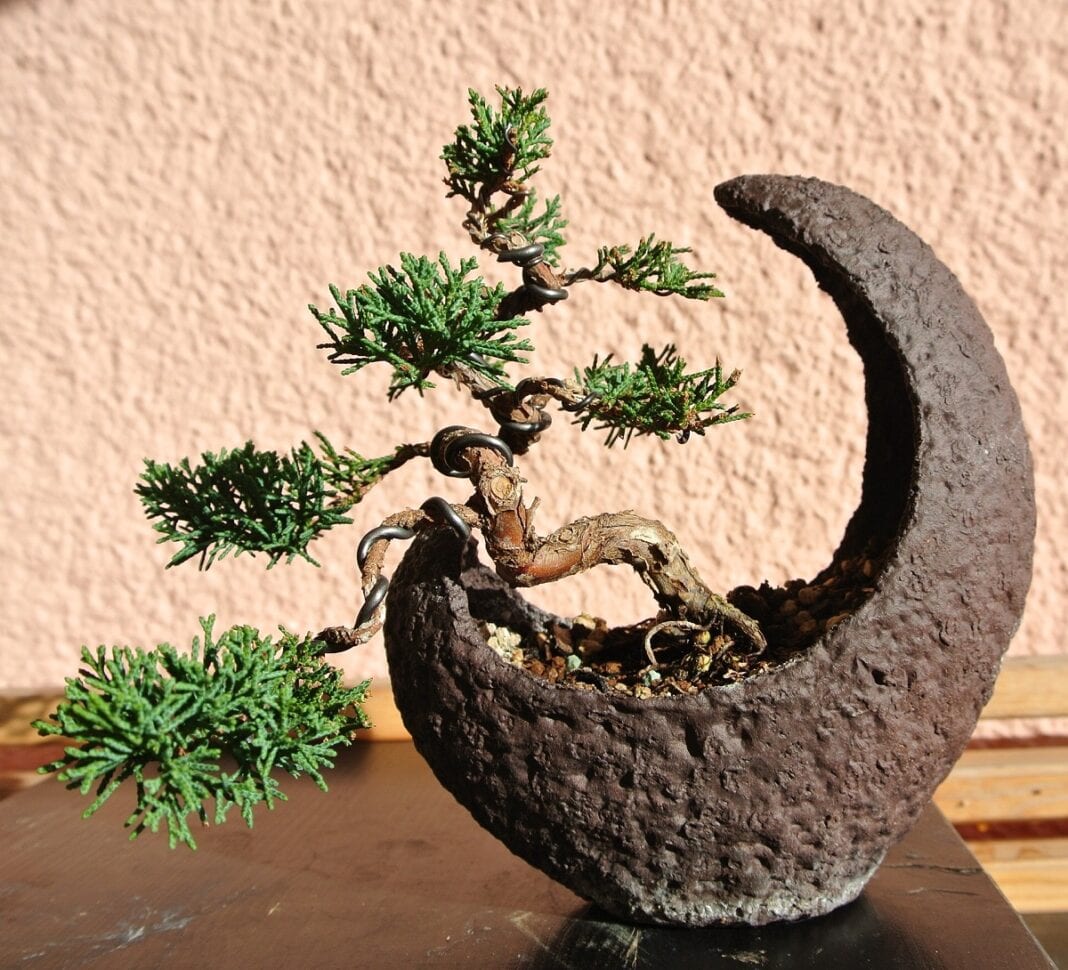Many believe that the care and keeping of Bonsai trees are challenging, with some avoiding the pleasure for fear of being inadequate. The suggestion is that with proper instruction, it can be much easier than we believe. Learn how to make a bonsai at https://thewhoot.com/whoot-news/diy/how-to-make-a-bonsai/.
Bonsai interprets as “tree in a tray” and is an art involving growing foliage that remains small in an artificial context. It is a Chinese-originated practice but has more association with a relationship to the colorful history in Japan, where these were made popular by the Buddhist monks who hoped to bring a bit of nature into their temples.
The bonsai tradition is thousands of years old. But the aim has never strayed since the beginning with the idea of controlling the atmosphere to develop miniature varieties of full-grown trees while keeping genetic properties intact. With decades of practice, the experts still needed to begin at some point, just as those attempting to learn the process today.
These trees require dedication, education, commitment and time, and loads of patience. Let’s check out some advice from those who practice this lovely art form.
Tips For Bonsai For Beginners
While the thought of bonsai interests many who enjoy gardening, plants, or foliage, since it’s so beautiful, most find it intimidating since the consensus is that it can be challenging, or that’s the perception that’s attached to the practice. Experts will tell you that it’s not as difficult as you might believe.
That’s if you research and follow the tutorials designated specifically for beginner bonsai trees since these will be more simplistic. The process is exceptionally time intensive, so you need to expect a certain level of responsibility. Otherwise, you shouldn’t become involved.
There is a degree of dedication involved plus significant patience – with the practice and yourself. There isn’t a rush to get it right. It’s okay to take your time and follow the guidelines every time you work with your tree. A few tips to get you started:
-
How would you like to obtain your tree
Some people like to grow the bonsai tree from scratch (or seedling) instead of buying a ready-to-go option. That’s where your patience is a plus since it can take as long as five years for your tree to develop. If you don’t have a green thumb, you might have to start over, maybe once or twice, adding to your timeline.
If you don’t believe you can wait that long, then it’s better to buy an already developed tree. You can even get one that’s pre-shaped, or you can work to manipulate the shape yourself.
-
Pick an option that works better for beginners.
Not all bonsai trees are created equal. They’re unique, with separate preferences, some with exceptional maintenance requirements, and others that are simply not suitable for a beginning bonsai practitioner. Some options for new owners include:
- Chinese Elm: Among the most popular since it offers easy-care, resilience, and slow-growing, giving plenty of time to educate on preferences before problems develop.
- Ficus: An indoor option making it an ideal choice for many beginners; hard on underwatering, but could prove harmful if indulging in other varieties.
- Juniper: This is optimally popular, found in gardens, with nurseries, and many web suppliers. The new owners like the budget-friendliness, durability, and accessibility.
-
Do your plants prefer indoors or outside?
If you’re new, this might seem a simplistic issue. Still, understanding the needs for humidity, sunlight, watering, and other requirements will prevent common damages to your tree. Improper care of this sort can lead to the bonsai’s unnecessary death.
A first decision should be whether you want to keep your plant indoors or outside and how you’ll care for it in that arena. Some can thrive in either scenario, including the Juniper, Ficus, and Chinese Elm.
-
Watering is an essential component of thriving.
As with any foliage, the amount of water you use with your Bonsai is as essential to its health. Because of forcing the smallness of the tree, the soil is kept shallow, creating the potential for drying out much quicker than is standard.
Different options for this foliage will provide unique requirements, meaning you’ll need to water them as individuals if you have varied types. The general guideline is to water the plant once the topsoil becomes dry.
But the exception is that some varieties need watering daily. If you see the surface is dry to the touch, water until the moisture spills out from the drainage holes and do so as necessary.
Underwater is a definite “no” because the tree will become “parched” but overwater will create yellowed leaves and withered branches.
-
Select the ideal soil for your chosen tree.
Specific soil is necessary for the chosen tree. One that will drain water but retains the moisture. Organic soil specific for a bonsai with elements that allow oxygen through.
The suggestion for the perfect combination for the soil being “Akadama”. That is a Japanese baked clay of lava rock and pumice. You can combine these with compost, including peat moss, along with slight amounts of sand to help with drainage. As mentioned, overwatering will damage a bonsai, but the soil can prevent that.
-
Pruning is mandatory.
When you have a bonsai tree, you will be pruning quite a bit. That is an essential component to the overall health and to maintain the diminutive size.
As a rule, for health purposes, the branches that make the tree look thick, plus the shoots and leaves that are unhealthy, need removing. That’s especially true for parts that keep the other elements of the tree from gaining sunlight.
As far as retaining the diminutive size and keeping the shape, you can allow yourself to be as artistic as you choose. Most people like to attempt to mimic the full-size shape and growth appearance in a miniature version.
But that’s not a rule. You can develop a beautiful recreation of your own design. As you go, you can educate yourself on wiring to bend stems as you desire into unique shapes.
Final Word
These are simple rules to follow, but you can find more tutorials online to help with your first bonsai tree. The idea is not to be intimidated regardless of your gardening abilities or experience in the foliage capacity. As long as you have the desire and willingness to put forth the responsibility and commitment plus the level of patience required, you’ll be able to work with this art form.
It does require talent, but only that which you can learn in all the tutorials found online. You simply need to educate. If you have that level of interest, you can surely educate yourself on the techniques.
It’s no different than raising any other type of living foliage, only this takes much more effort and time, but the end result is much more glamorous and intriguing than you’ll find in a typical houseplant or other types of foliage. Having such beauty in your home is undoubtedly worth all that you put forth in the effort.



















